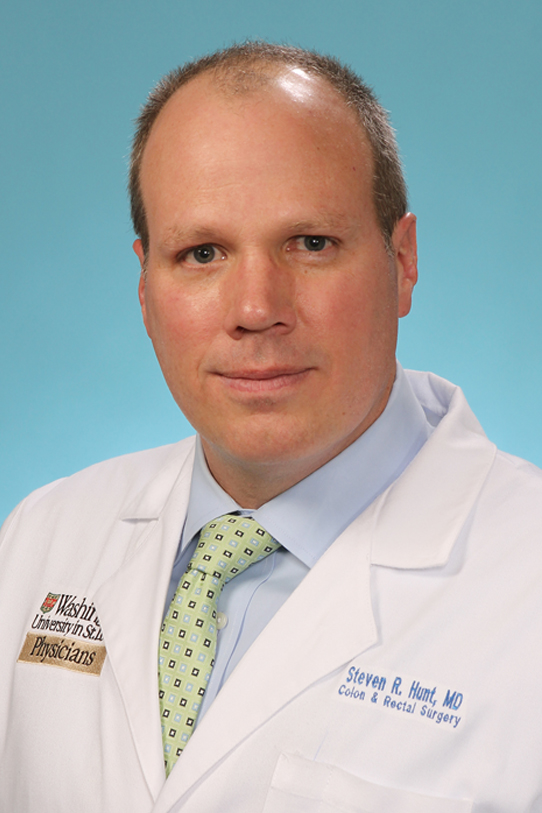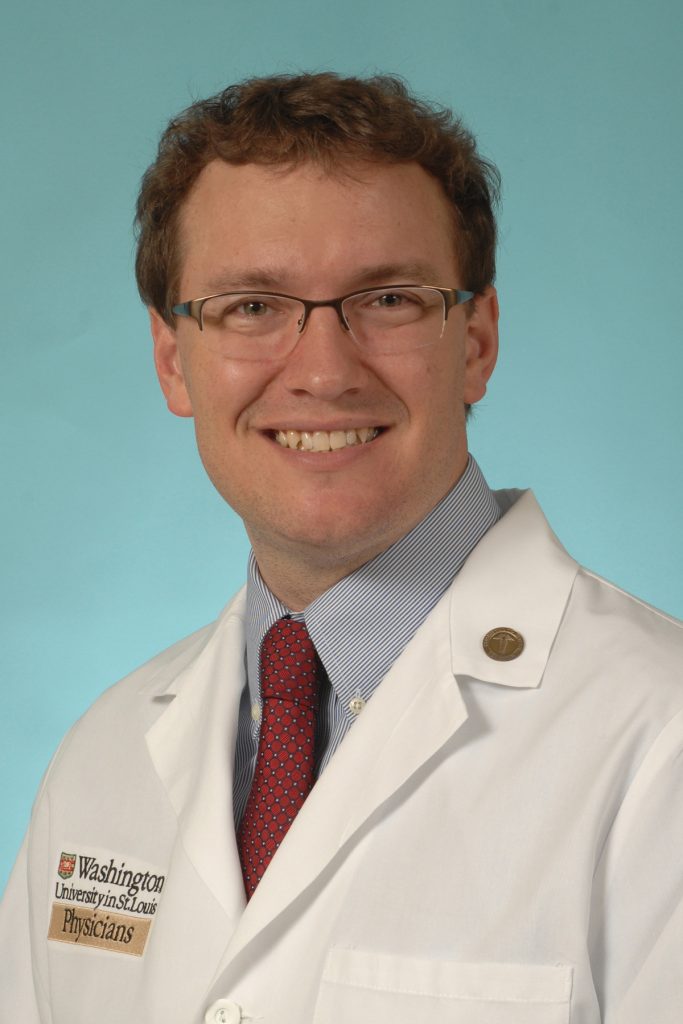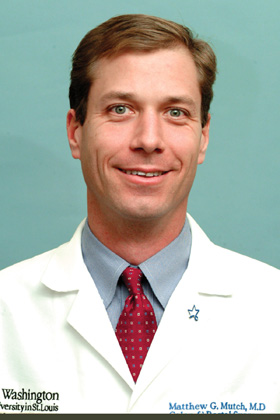Washington University Colon and Rectal surgeons answer patient questions regarding diverticulitis and diverticulosis.

Diverticulosis and diverticulitis are not exactly the same thing. Diverticulosis is the presence of small diverticula or outpouchings (like hernias) in the wall of the colon. Diverticulitis is when one or several of these diverticula burst and cause infection or inflammation. While diverticulosis is common, occurring in more than half of American senior citizens, diverticulitis only occurs in about 20% of patients with diverticulosis. The majority of diverticulitis occurs in the last segment of the colon above the rectum called the sigmoid colon.
Diverticulosis, or the presence of diverticula, is common in the United States because of our Western diet, which is generally high in fat and low in fiber. In general, diverticulosis and diverticulitis result from high pressures in the colon related to the typical Western diet. These diverticula are weak spots in the colon that can burst and cause diverticulitis. Even if one has developed diverticulosis, there is good evidence that a diet high in fiber decreases the risk of developing diverticulitis. We do not understand what actually causes a diverticula to burst.
In general, seeds and nuts do not cause diverticulitis. In fact, a healthy diet that is high in fiber can be preventative for developing diverticulitis. Patients often are told to avoid anything with seeds or nuts, including strawberries. There is no evidence to support avoidance of these foods.
The only way to definitively diagnose diverticulitis is with a CT scan. In patients who have had previous CT proven attacks of diverticulitis, the diagnosis can often be made based on symptoms alone.
Symptoms from diverticulitis include lower or left-sided abdominal pain and fever. Lower abdominal tenderness is common. Some patients will develop more chronic symptoms including pain when they need to have a bowel movement.
Mild disease is often treated as an outpatient with oral antibiotics and bowel rest. Bowel rest can mean drinking only clear liquids or eating a low residue diet (a diet low in fiber and fat). For more severe disease, patients may require hospitalization and intravenous antibiotics. More severe disease also may require complete bowel rest, when patients are not allowed to eat anything. Instead, patients are given intravenous fluids and may even require their nutrition to be delivered via an intravenous route.
Sometimes, patients develop abscesses or pus collections around their colon. This is a more severe form of diverticulitis. Large abscesses may require percutaneous drainage. This is when a radiologist places a drain through the skin into the abscess cavity.
The most severe manifestation of diverticulitis results when there is a free perforation of the colon into the abdominal cavity causing peritonitis. This can be a life-threatening situation. These patients require emergency surgery and frequently the creation of a temporary colostomy.
For patients who have recurrent attacks of diverticulitis, elective surgery may be recommended. This operation can usually be accomplished laparoscopically and involves removal of the sigmoid colon. In general, elective surgery does not require an ostomy bag.
Antibiotics are not always required, especially with very mild cases. Often patients will improve with dietary modifications.
After recovery from diverticulitis, a high-fiber, low-fat diet is the best diet. There is also evidence that this can reduce the risk of subsequent attacks.
Wen there is a free perforation and peritonitis, emergency surgery is usually necessary. For patients with recurrent disease, surgery is frequently recommended after three or four attacks. The recommendation for surgery depends on many factors, including the severity of the attacks, the frequency of the attacks, and the patient’s willingness to suffer from these repeated attacks.
One thing that has become increasingly clear is that life-threatening attacks tend to happen on the first or second attack of diverticulitis. Having an increasing number of attacks does not put someone at higher risk for having a free perforation and requiring a colostomy.
Certain complications from diverticulitis can make surgery necessary, including a stricture or a fistula. A stricture is a narrowing of the colon that can result from the severe inflammation that happens during an attack of diverticulitis. If the stricture is narrow and causes partial or complete obstruction of the colon, surgery can be necessary. A fistula is when the infection causes erosion into another organ or through the skin. When this happens, surgery is usually recommended.
For the most part, with elective surgery for diverticulitis, a colostomy is not necessary. There are exceptions to this rule, usually when patients have had extremely severe attacks or have developed extremely complex fistulas. Usually, when an ostomy is necessary in these situations, it is temporary.
If emergency surgery is required in cases of complete perforation and peritonitis, a colostomy is frequently necessary. This is usually a temporary colostomy and it can be reversed several months after the patient has recovered.
For mild attacks, the patient should call their physician. For more severe attacks, it may be necessary to go to an emergency room.
Rarely, colon cancer can masquerade as diverticulitis. If a patient has an attack of diverticulitis and has not had a recent colonoscopy, one should be performed a couple of months after recovery from the diverticulitis.
Washington University Colorectal can provide treatment options for diverticulosis or diverticulitis. Meet our specialists below.




